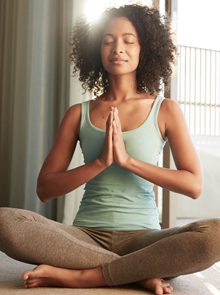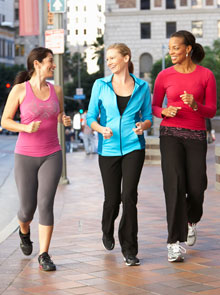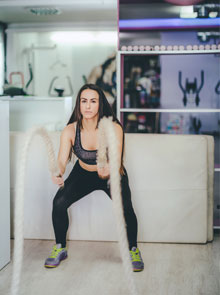It’s no secret that working out helps you live longer and feel better. But did you know that some exercises are more effective than others? Four health and fitness experts share their top anti-ageing exercises to slow the clock.
ALSO SEE: Could Vinegar Be The Secret To Anti-Ageing?
If you’re looking for a good reason to start working out more regularly, a recent Harvard study found that exercise has massive anti-ageing benefits and trumps prescription drugs for managing chronic health conditions such as obesity, diabetes, heart disease and stroke.
Beat ageing with exercise
People have been looking for all sorts of miracle cures to feel better and live longer, but it turns out the most powerful intervention is to include anti-ageing exercises in your everyday life, says Nish Joshi, celebrity health guru to the stars including Gwyneth Paltrow, Cate Blanchett and Patsy Kensit.
ALSO SEE: Gwyneth Paltrow’s Beauty Routine For Glowing Skin
The author of Joshi’s total health for life – how to be happy, healthy, radiant for life says that regular exercise keeps your heart and lungs working at optimum levels, plus it alleviates stress, promotes better sleep and is a natural and effective mood elevator.
And when it comes to reducing the effects of ageing, these 4 workouts come out tops…
Exercise: Yoga

Yoga puts pressure on all the different organs and muscles of the body very systematically.
As well as toning the outer body, it tones the whole of the inner body too including the liver, lungs, kidneys, spleen, intestines and heart says Joshi.
The deep stretching brings both bones and muscles gently back into their optimum alignment while lubricating the joints.
Plus, regular yoga can improve both the oxygenation of the blood and its circulation.
“It’s also a superb way of helping your body to detoxify because it encourages lymphatic flow and the increase in circulation brings an inner glow to your skin, makes your eyes shine and your hair gleam,” he adds.
ALSO SEE: Age Specific Exercises For Arms And Abs
Exercise: Walking

It’s one of the simplest forms of exercises, yet walking is one of the most effective ways to add years to your life.
In fact, according to the US President’s Council on Physical Fitness, walking helps to lower your resting heart rate – a major benefit for overall heart health, while improving muscle tone and reducing stress.
Regular walking has been shown to aid cognitive function and preserve memory, plus it also helps with balance and coordination.
To gain maximum benefit, try build up a sweat (as the latest research shows that raising your heart rate efficiently reaps the greatest age-defying rewards), and aim to do at least 30 minutes of walking five times a week.
ALSO SEE: Celebrity Anti-ageing: Their Secrets
Exercise: Cycling
You don’t need to ride 100km to benefit from bike riding. According to a recent mental health survey in the UK, just 30 minutes of cycling helped to improve tension and depression in 90% of those surveyed.
“Regular exercise burns off ageing chemicals such as cortisol and adrenalin that we produce in stressful situations, so they don’t build up over time,” says author and psychiatrist Paul Keedwell.
Plus, cycling is a great low-impact activity and easier on the joints, so often patients with knee or back injuries from high-impact sports such as running start cycling or spinning indoors to stay fit while speeding up recovery, says Johannesburg based nutrition coach and spinning instructor, Sharon Van Den Heever.
And when you ride, give it a good go! Making your heart work at 80% of its age-adjusted maximum capacity (calculated by taking 220 minus your age) keeps your blood vessels elastic by forcing them to dilate and helps to lower blood pressure. Plus you’ll tone those thighs and get fitter too.
ALSO SEE: 5 Indoor Exercises To Keep You Fit Through Winter
Exercise: CrossFit

You may have heard all sorts of horror stories about how gruelling CrossFit is, but the truth is it’s suitable for all ages and fitness levels, and it’s one of the best types of exercises you can do to build overall strength and reverse the physical signs of ageing, says Personal Trainer and Level 2 CrossFit Trainer Nic Strehler.
Rather than spending hours in a gym, CrossFit sessions are short and focused with varying and relative intensity levels to suit individual needs.
Sessions include a series of functional movements such as pulling, pushing, jumping, running and lifting objects, to promote balance, strength, endurance and flexibility.
Studies have shown that just a few sessions of CrossFit-type training every week will help to develop a healthy, fit and balanced body, no matter what your age.
In fact, according to a recent article in the CrossFit Journal, classes are always adapted to include less weight, fewer reps and more rest for those who need it.
The ultimate aim is to help everyone “do life better” including activities such as walking up a flight of stairs, or carrying groceries.

